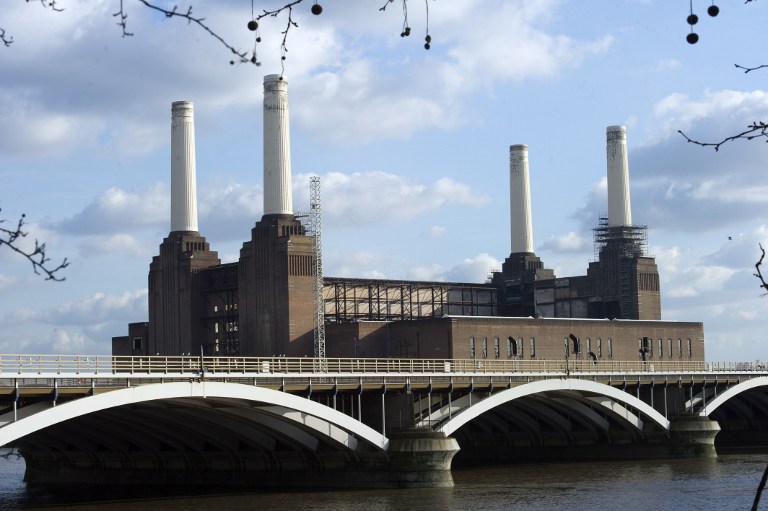LONDON, Oct 29 ― After 30 years of languishing by the River Thames and countless attempts to revive it, London's iconic Battersea Power Station is finally coming to life as part of one of the biggest regeneration projects in the world.
“We are definitely beyond the point of this project ever stopping again,” David Twohig, the director of design at the BPS Development Company, told AFP at the site.
Behind him loomed the 1930s red brick building with four 100-metre (330-foot) white chimneys, a landmark that became famous around the world after gracing the cover of a Pink Floyd album.
The former coal-fired power station has been an empty shell since it ceased operating in 1983.
But now hundreds of construction workers in yellow safety jackets swarm the building and its surroundings, working on a 17-hectare (42-acre) site that is being transformed into a new neighbourhood.
The area will boast 4,000 new homes ― 1,350 designed by renowned architects Norman Foster and Frank Gehry ― as well as 150,000 square metres of office space, 325,000 square metres of shops, restaurants and a public park.
Restoring the original glory
The striking building was designed by architect Giles Gilbert Scott, who was also responsible for the power station that now houses the Tate Modern, and for Britain's traditional red telephone cabins.
Pink Floyd's 1977 album “Animals” made Battersea famous, but it also featured in The Beatles' 1965 film “Help!”, the 2008 Batman movie “The Dark Knight” and in “The King's Speech” in 2010.
For three decades, developers dreamed of turning it into a superstore, an industrial theme park and even a new stadium for Chelsea football club.
Then in 2012, a Malaysian consortium bought the building and surrounding land for €512 million (RM2.1 billion) ― and the development team has promised to restore Battersea “to its original glory”.
Standing where the turbines once operated, a space big enough to fit St Paul's Cathedral and open to the sky above, the immense amount of work involved is immediately apparent.
One million hand-made bricks will replace those that are damaged or missing.
The windows, balconies, gilt bronze doors, wrought iron banisters, mosaics, Italian marble surfaces and other Art Deco features will be restored.
The cracked chimneys are being dismantled bit by bit and replaced like for like, while even the two enormous cranes used to load the coal from barges will be repaired.
The dials in the control room will also be polished and the space reserved for functions, including fashion shows.

'City within a city'
The building will be transformed into three floors of shops with a hotel and a cinema, six floors of office space and 250 penthouse apartments ― the heart of a mixed use development with the “wow factor”.
“It's a city within a city,” said Twohig, an Irishman who learned his trade in Hong Kong and Shanghai, comparing the project to the sought-after Meatpacking District in New York.
So how is this project, which will gradually come to life between 2015 and 2016, succeeding where so many failed?
A few hundred metres away, a new US embassy building is under construction, an investment that helped persuade the London Underground to build two new subway stations in the area that provide much-needed transport links.
The owners of the Battersea site have also invested heavily, with the project estimated at about £8 billion.
The work involved is immense even by the standards of London, where 237 skyscrapers are currently under construction or planned, and will dramatically change the landscape in this part of the city.
Tony Travers, of the London School of Economics, has said the Battersea development is symptomatic of the “Hong Kongification” of the British capital.
A marketing campaign begins this week to sell the apartments to wealthy buyers in Asia, the United States, the Gulf as well as Paris and Milan.
Several studios costing €600,000 and four-bedroom apartments at four million each have already been sold ― a bargain compared to the 13-million-euro penthouse. ― AFP





















